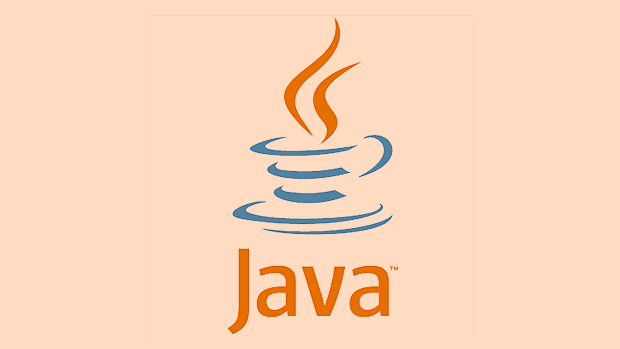To create a custom collector in Java Streams, use Collector.of() with supplier, accumulator, combiner, and finisher. 1. Supplier initializes the container. 2. Accumulator adds elements to it. 3. Combiner merges containers, crucial for parallel streams. 4. Finisher converts the result to the desired type. Ensure combiner works correctly for parallelism. Use custom collectors when reuse or API integration is needed, otherwise prefer reduce(). Test thoroughly, especially for parallel use.

When you're working with Java Streams and need to do something more specific than what Collectors.toList() or Collectors.toSet() offer, creating a custom collector is the way to go. The key is implementing the Collector interface properly while understanding how each part fits into the stream pipeline.

What You Need Before Writing a Custom Collector
Before diving into writing your own collector, make sure you understand:
- How Java Streams work, especially terminal operations.
- The difference between mutable and immutable reductions.
- That a collector defines four operations: supplier, accumulator, combiner, and finisher.
You’ll also want to import java.util.stream.Collector and related classes before starting.

A good example use case might be collecting data into an immutable custom container or aggregating results in a special format.
Implementing the Collector Interface Step by Step
Java provides a Collector.of() method that makes it easier to define all necessary parts without needing to write a full class that implements Collector.

Here’s how you can structure it:
Collector<T, A, R> collector = Collector.of(
() -> new IntermediateContainer(), // Supplier
(container, element) -> container.add(element), // Accumulator
(container1, container2) -> container1.merge(container2), // Combiner
container -> container.getResult() // Finisher
);Let’s break those parts down:
- Supplier: Returns a new result container. This is where you start fresh for each reduction.
- Accumulator: Adds elements to the container as they come in from the stream.
- Combiner: Merges two containers — this is important for parallel streams.
- Finisher: Converts the final intermediate result into the desired output type.
Make sure your combiner works correctly in parallel scenarios unless you know the collector will only be used sequentially.
Example: Collecting Into a Custom Immutable List
Say you want to collect elements into a custom immutable list wrapper. Here's how you'd do it:
public class MyImmutableList<T> {
private final List<T> list;
public MyImmutableList(List<T> list) {
this.list = Collections.unmodifiableList(new ArrayList<>(list));
}
public static <T> Collector<T, ?, MyImmutableList<T>> toMyImmutableList() {
return Collector.of(
ArrayList::new,
List::add,
(list1, list2) -> {
list1.addAll(list2);
return list1;
},
MyImmutableList::new
);
}
}Then you can use it like this:
MyImmutableList<String> result = stream.collect(MyImmutableList.toMyImmutableList());
This pattern gives you flexibility and keeps your stream pipelines clean.
One thing to watch out for: if you forget to handle the combiner properly, your collector may not behave correctly in parallel streams.
When to Use Custom Collectors vs Regular Reductions
Custom collectors are best when:
- You find yourself repeating the same reduce logic across multiple places.
- You need to integrate with existing APIs that expect a
Collector. - You want to abstract away complex collection logic for cleaner code.
On the other hand, if it's a one-off operation, just using reduce() might be simpler and more readable.
So ask yourself: will I reuse this? If yes, build a collector. If no, stick with reduce or a simple mutable container.
That's basically it. It’s not overly complicated once you get the pattern down, but there are enough moving parts that you should test thoroughly — especially if you plan to use your collector in parallel streams.
The above is the detailed content of How to create a custom collector for Java Streams?. For more information, please follow other related articles on the PHP Chinese website!

Hot AI Tools

Undress AI Tool
Undress images for free

Undresser.AI Undress
AI-powered app for creating realistic nude photos

AI Clothes Remover
Online AI tool for removing clothes from photos.

Clothoff.io
AI clothes remover

Video Face Swap
Swap faces in any video effortlessly with our completely free AI face swap tool!

Hot Article

Hot Tools

Notepad++7.3.1
Easy-to-use and free code editor

SublimeText3 Chinese version
Chinese version, very easy to use

Zend Studio 13.0.1
Powerful PHP integrated development environment

Dreamweaver CS6
Visual web development tools

SublimeText3 Mac version
God-level code editing software (SublimeText3)

Hot Topics
 Difference between HashMap and Hashtable?
Jun 24, 2025 pm 09:41 PM
Difference between HashMap and Hashtable?
Jun 24, 2025 pm 09:41 PM
The difference between HashMap and Hashtable is mainly reflected in thread safety, null value support and performance. 1. In terms of thread safety, Hashtable is thread-safe, and its methods are mostly synchronous methods, while HashMap does not perform synchronization processing, which is not thread-safe; 2. In terms of null value support, HashMap allows one null key and multiple null values, while Hashtable does not allow null keys or values, otherwise a NullPointerException will be thrown; 3. In terms of performance, HashMap is more efficient because there is no synchronization mechanism, and Hashtable has a low locking performance for each operation. It is recommended to use ConcurrentHashMap instead.
 What are static methods in interfaces?
Jun 24, 2025 pm 10:57 PM
What are static methods in interfaces?
Jun 24, 2025 pm 10:57 PM
StaticmethodsininterfaceswereintroducedinJava8toallowutilityfunctionswithintheinterfaceitself.BeforeJava8,suchfunctionsrequiredseparatehelperclasses,leadingtodisorganizedcode.Now,staticmethodsprovidethreekeybenefits:1)theyenableutilitymethodsdirectly
 How does JIT compiler optimize code?
Jun 24, 2025 pm 10:45 PM
How does JIT compiler optimize code?
Jun 24, 2025 pm 10:45 PM
The JIT compiler optimizes code through four methods: method inline, hot spot detection and compilation, type speculation and devirtualization, and redundant operation elimination. 1. Method inline reduces call overhead and inserts frequently called small methods directly into the call; 2. Hot spot detection and high-frequency code execution and centrally optimize it to save resources; 3. Type speculation collects runtime type information to achieve devirtualization calls, improving efficiency; 4. Redundant operations eliminate useless calculations and inspections based on operational data deletion, enhancing performance.
 Why do we need wrapper classes?
Jun 28, 2025 am 01:01 AM
Why do we need wrapper classes?
Jun 28, 2025 am 01:01 AM
Java uses wrapper classes because basic data types cannot directly participate in object-oriented operations, and object forms are often required in actual needs; 1. Collection classes can only store objects, such as Lists use automatic boxing to store numerical values; 2. Generics do not support basic types, and packaging classes must be used as type parameters; 3. Packaging classes can represent null values ??to distinguish unset or missing data; 4. Packaging classes provide practical methods such as string conversion to facilitate data parsing and processing, so in scenarios where these characteristics are needed, packaging classes are indispensable.
 What is an instance initializer block?
Jun 25, 2025 pm 12:21 PM
What is an instance initializer block?
Jun 25, 2025 pm 12:21 PM
Instance initialization blocks are used in Java to run initialization logic when creating objects, which are executed before the constructor. It is suitable for scenarios where multiple constructors share initialization code, complex field initialization, or anonymous class initialization scenarios. Unlike static initialization blocks, it is executed every time it is instantiated, while static initialization blocks only run once when the class is loaded.
 What is the Factory pattern?
Jun 24, 2025 pm 11:29 PM
What is the Factory pattern?
Jun 24, 2025 pm 11:29 PM
Factory mode is used to encapsulate object creation logic, making the code more flexible, easy to maintain, and loosely coupled. The core answer is: by centrally managing object creation logic, hiding implementation details, and supporting the creation of multiple related objects. The specific description is as follows: the factory mode handes object creation to a special factory class or method for processing, avoiding the use of newClass() directly; it is suitable for scenarios where multiple types of related objects are created, creation logic may change, and implementation details need to be hidden; for example, in the payment processor, Stripe, PayPal and other instances are created through factories; its implementation includes the object returned by the factory class based on input parameters, and all objects realize a common interface; common variants include simple factories, factory methods and abstract factories, which are suitable for different complexities.
 What is the `final` keyword for variables?
Jun 24, 2025 pm 07:29 PM
What is the `final` keyword for variables?
Jun 24, 2025 pm 07:29 PM
InJava,thefinalkeywordpreventsavariable’svaluefrombeingchangedafterassignment,butitsbehaviordiffersforprimitivesandobjectreferences.Forprimitivevariables,finalmakesthevalueconstant,asinfinalintMAX_SPEED=100;wherereassignmentcausesanerror.Forobjectref
 What is type casting?
Jun 24, 2025 pm 11:09 PM
What is type casting?
Jun 24, 2025 pm 11:09 PM
There are two types of conversion: implicit and explicit. 1. Implicit conversion occurs automatically, such as converting int to double; 2. Explicit conversion requires manual operation, such as using (int)myDouble. A case where type conversion is required includes processing user input, mathematical operations, or passing different types of values ??between functions. Issues that need to be noted are: turning floating-point numbers into integers will truncate the fractional part, turning large types into small types may lead to data loss, and some languages ??do not allow direct conversion of specific types. A proper understanding of language conversion rules helps avoid errors.






